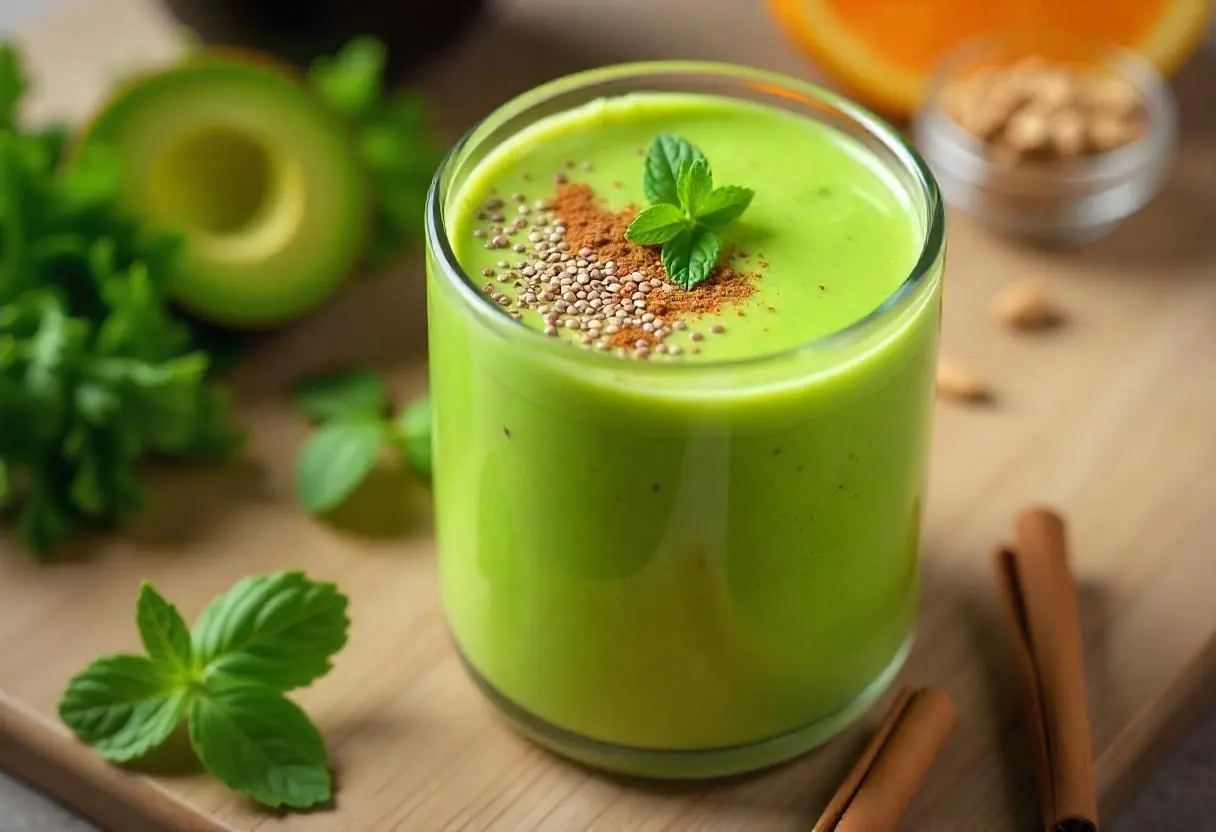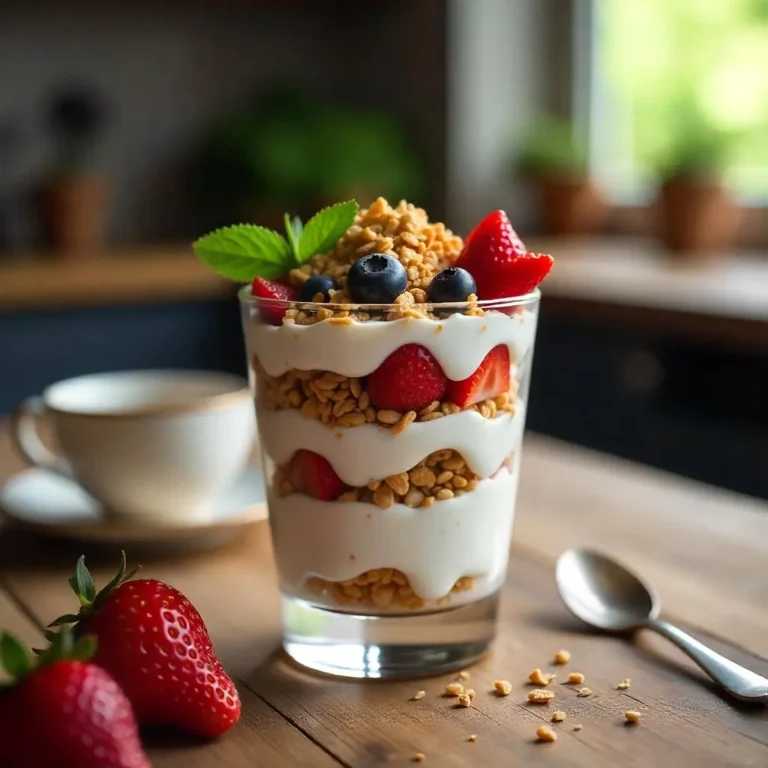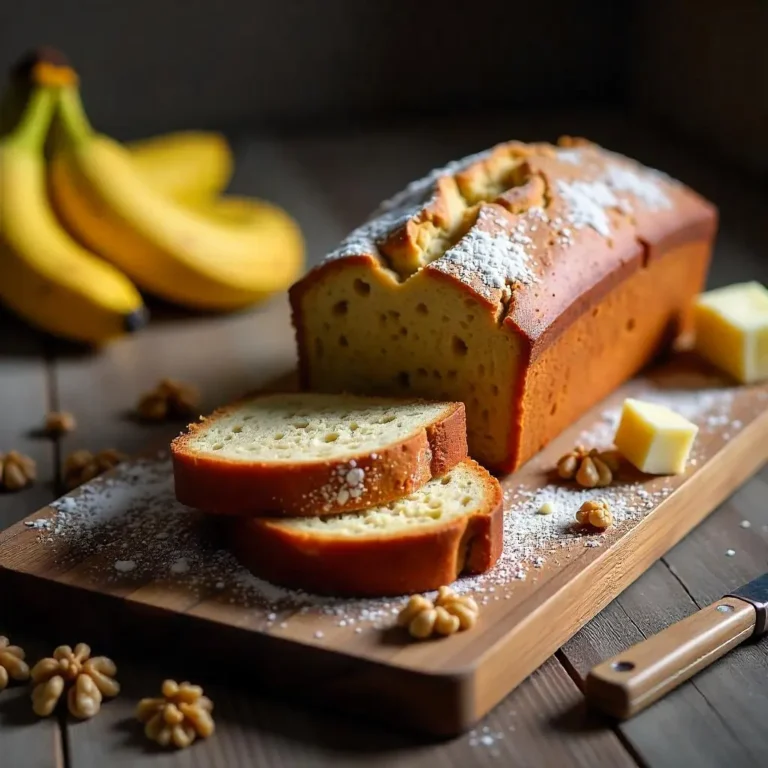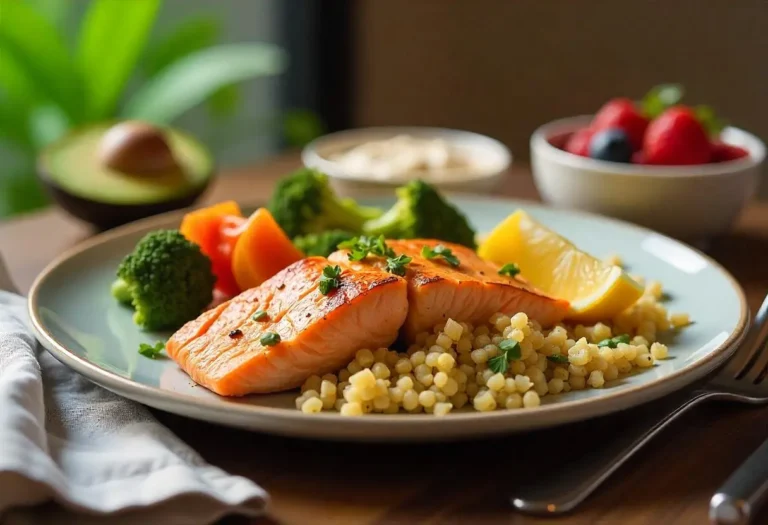Delicious Low-Carb Diabetic Breakfast Smoothie to Kickstart Your Day
Are you tired of skipping breakfast or settling for carb-heavy options that spike your blood sugar? What if there was a way to enjoy a delicious, nutrient-packed smoothie that fits perfectly into your diabetic meal plan and keeps you energized all morning? Enter the low-carb diabetic breakfast smoothie —a game-changer for anyone managing diabetes or simply looking to eat healthier. In this post, we’ll explore how this smoothie can revolutionize your mornings while keeping your blood sugar stable.
Ingredients List
Crafting the perfect low-carb diabetic breakfast smoothie starts with selecting wholesome, nutrient-dense ingredients. Here’s what you’ll need:
- 1 cup unsweetened almond milk (or any low-carb milk alternative like coconut or oat milk)
- 1/2 avocado (for creaminess and healthy fats)
- 1/2 cup spinach or kale (packed with fiber and vitamins)
- 1/4 cup frozen cauliflower rice (adds bulk without carbs)
- 1 tablespoon chia seeds or flaxseeds (rich in omega-3s and fiber)
- 1/2 teaspoon cinnamon (helps stabilize blood sugar levels)
- 1 scoop unflavored protein powder (optional, for added satiety)
- Ice cubes (to achieve a refreshing, chilled texture)
Substitutions and Sensory Descriptions
If you’re not a fan of spinach, swap it for baby arugula or Swiss chard. Love tropical flavors? Add a few slices of cucumber or zucchini for a hydrating twist. The creamy avocado pairs beautifully with the subtle sweetness of cinnamon, creating a velvety texture that feels indulgent yet guilt-free.
Timing
Preparing this diabetic smoothie for breakfast is quick and efficient, making it ideal for busy mornings. Here’s the breakdown:
- Preparation Time: 5 minutes (including chopping and measuring ingredients)
- Blending Time: 2 minutes
- Total Time: 7 minutes
Compared to the average breakfast recipe, which takes around 15–20 minutes, this smoothie saves you over 60% of your time—perfect for those hectic weekday mornings!
Step-by-Step Instructions
Step 1: Gather Your Ingredients
Before you begin, ensure all your ingredients are prepped and ready. This step ensures a seamless blending process.
Pro Tip: Pre-portion your ingredients the night before and store them in a freezer-safe bag. This hack cuts down on prep time and makes mornings stress-free.
Step 2: Add Liquids First
Pour the unsweetened almond milk into your blender. Adding liquids first helps the blender run smoothly and prevents clumping.
Step 3: Layer in the Greens and Veggies
Add spinach or kale, followed by frozen cauliflower rice. These veggies provide essential nutrients without adding unnecessary carbs.
Actionable Tip: If you’re new to green smoothies, start with smaller amounts of greens and gradually increase as your palate adjusts.
Step 4: Incorporate Healthy Fats and Protein
Toss in the avocado, chia seeds, and protein powder. These ingredients keep you full longer and prevent mid-morning cravings.
Step 5: Blend Until Smooth
Blend on high speed for about 1–2 minutes, or until the mixture is creamy and free of lumps.
Step 6: Adjust Consistency
If the smoothie is too thick, add a splash more almond milk. For a thicker texture, toss in a few extra ice cubes.
Nutritional Information
This low-carb diabetic breakfast smoothie is not only delicious but also packed with nutrients. Here’s a breakdown of its nutritional profile per serving:
Data Insight: With only 10g of net carbs, this smoothie contains 70% fewer carbs than a typical fruit-based smoothie, making it an excellent choice for managing blood sugar levels.
Healthier Alternatives for the Recipe
Looking to tweak this recipe further? Here are some creative ideas:
- For a Keto Twist: Replace almond milk with unsweetened coconut milk and add a teaspoon of MCT oil for an extra boost of healthy fats.
- For Vegans: Use plant-based protein powder and ensure all other ingredients are vegan-friendly.
- For Extra Flavor: Add a drop of vanilla extract or a sprinkle of nutmeg for a warm, inviting aroma.
Serving Suggestions
Elevate your smoothie experience with these serving ideas:
- Pour your smoothie into a mason jar for an Instagram-worthy presentation.
- Top it with a sprinkle of crushed nuts or shredded coconut for added texture.
- Pair it with a boiled egg or a slice of whole-grain toast for a balanced breakfast.
Common Mistakes to Avoid
Even the simplest recipes can go wrong if you’re not careful. Here are some pitfalls to watch out for:
- Overloading on Sweeteners: Avoid adding honey, agave, or artificial sweeteners, as they can spike blood sugar levels. Stick to natural sweetness from cinnamon or a small amount of stevia.
- Skipping the Greens: Don’t shy away from leafy greens—they’re essential for fiber and micronutrients.
- Using High-Carb Fruits: Bananas and mangoes may seem tempting, but they’re high in sugar. Opt for low-carb fruits like berries instead.
Storing Tips for the Recipe
If you have leftovers or want to prep ahead, here’s how to store your smoothie:
- Refrigeration: Store in an airtight container for up to 24 hours. Shake well before consuming, as separation may occur.
- Freezing: Pour the smoothie into ice cube trays and freeze. Blend the cubes later for a quick, refreshing treat.
Conclusion
This low-carb diabetic breakfast smoothie is a nutritious, time-saving option that supports stable blood sugar levels while satisfying your taste buds. With its creamy texture, rich flavor, and health benefits, it’s a must-try for anyone seeking a diabetes-friendly breakfast.
Ready to give it a shot? Try the recipe today and let us know how it turned out in the comments below. Don’t forget to subscribe for more delicious, health-conscious recipes!
FAQs
Q1: Can I use regular milk instead of almond milk?
A: While regular milk works, it contains more carbs. Opt for unsweetened almond or coconut milk to keep the carb count low.
Q2: Is this smoothie suitable for people without diabetes?
A: Absolutely! This smoothie is a great option for anyone looking to reduce carbs, increase nutrients, or simply enjoy a healthy breakfast.
Q3: How can I make this smoothie sweeter without adding sugar?
A: Try adding a teaspoon of vanilla extract or a handful of fresh berries for natural sweetness.
Q4: Can I prepare this smoothie the night before?
A: Yes! Blend all ingredients except ice, store in the fridge, and blend again with ice in the morning for a fresh texture.
Q5: What if I don’t have a high-powered blender?
A: No problem! Soak chia seeds and freeze cauliflower rice beforehand to ensure a smoother blend.
By following this guide, you’ll not only master the art of crafting a low-carb diabetic breakfast smoothie but also gain valuable insights into healthier eating habits. Cheers to a vibrant, nourishing start to your day!








One Comment
Comments are closed.